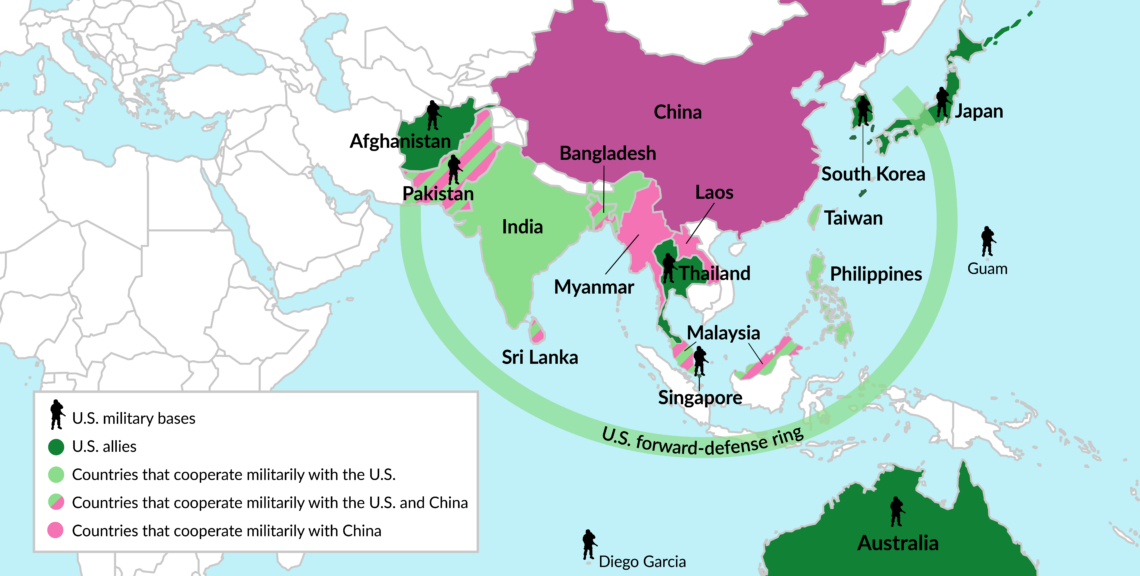Mounting tension in Asia
Tensions are rising in relations between the U.S. and China, especially after the recent APEC summit. However, the heightened rhetoric used there could give both countries a chance to climb down and come to a deal. Presidents Donald Trump and Xi Jinping will have a perfect opportunity to do so during the G20 summit in Buenos Aires.

The Asia-Pacific Economic Cooperation forum, or APEC, has 21 members throughout the Pacific Rim in Asia, Australia, Oceania and the Americas. The purpose of the organization, founded on the initiative of Japan, Australia and the U.S., is to promote free trade in the region. It is a loose association and its resolutions are nonbinding.
Last week, APEC held its annual summit in Port Moresby, the capital of Papua New Guinea. For the first time in the organization’s history, no common statement could be issued. The main reason for this was that Chinese President Xi Jinping and U.S. Vice President Mike Pence used the meeting as a platform to argue over their countries’ differences.
The allegations are substantial – especially those the U.S. has made against China – and the incident made even clearer the deep rift between the two countries. Besides old issues such as China’s theft of intellectual property and its economic espionage, the main American charge was that China, with its Belt and Road Initiative (BRI), has created several dependent states.
For his part, President Xi (hypocritically) criticized U.S. protectionism. But the biggest issue for China is that it believes Washington and its allies have worked to contain it, both politically and economically. It is true that the U.S. has engaged in this strategy – and it is a normal reaction from a hegemonic power toward a rising, assertive power. It must also be acknowledged that China’s attempt to fully control the South China Sea violates international rules.
Containment strategies
The American strategy to contain China is nothing new. Access to the Pacific Ocean is controlled by U.S. allies, starting with Japan and South Korea in the north, moving south through Okinawa, Taiwan, the Philippines and Singapore. Indonesia and especially Vietnam are also concerned about China becoming too powerful. Ironically, for all these countries – except Japan and Singapore – China is their largest trading partner. In fact, the Trans-Pacific Partnership (TPP), which would have created a free trade area between the U.S., Canada and some Latin American countries with Japan, South Korea and Southeast Asian states, was also aimed at containing China in terms of trade. It was a flagship project of the Obama administration, though President Trump pulled the U.S. out of the initiative.
As a counter to China’s BRI, the U.S. proposes the “Free and Open Indo-Pacific” strategy, which heavily involves Japan, India and Australia. It is seen as an association of democracies, assuring the economic and trade links between the Pacific and the Indian Ocean. The project is especially interesting for Indonesia, the world’s fourth-largest country in terms of population, whose archipelago of thousands of islands separates the two oceans.
India plays a big role in this strategy. During the Cold War, New Delhi leaned more toward the Soviet Union than the U.S. This has changed, especially due to India’s increased concerns about China. India sees China as a threat to its territorial integrity across the Himalayas, worries about Beijing’s political and economic flirtation with Pakistan and has begun to challenge China’s rising naval presence in the Indian Ocean.
Presidents Xi and Trump have agreed to meet face-to-face, showing their intention to come to an understanding.
Sino-Indian tensions manifest themselves on the countries’ border along the Himalayas. But there are other indicators. Take the Maldives, for example, a group of islands that so far has only held an attraction as a tourist destination. However, islands always have a strategic use as naval bases, or as U.S. General MacArthur once put it, “unsinkable aircraft carriers.” Last December, the Maldives signed a free trade agreement with China. After a visit from Indian Prime Minister Narendra Modi, the Maldives canceled the deal on the unconvincing pretext that the trade imbalance between it and China was too big.
Another move aimed at limiting China’s hegemonic ambitions is the Quadrilateral Security Dialogue, a military collaboration initiated in 2007 by Australia, India, Japan and the U.S.
U.S. President Donald Trump and President Xi will meet next week at the G20 summit in Buenos Aires. The antagonistic rhetoric used in Port Moresby could allow both countries to climb down and make a deal. Against all G20 conventions, Presidents Xi and Trump have agreed to meet face-to-face for dinner, showing their intention to come to an understanding. Although such an agreement would only be temporary, due to the superpowers’ diverging long-term strategic interests, such meetings will become more frequent, so as to avoid escalating tensions.
